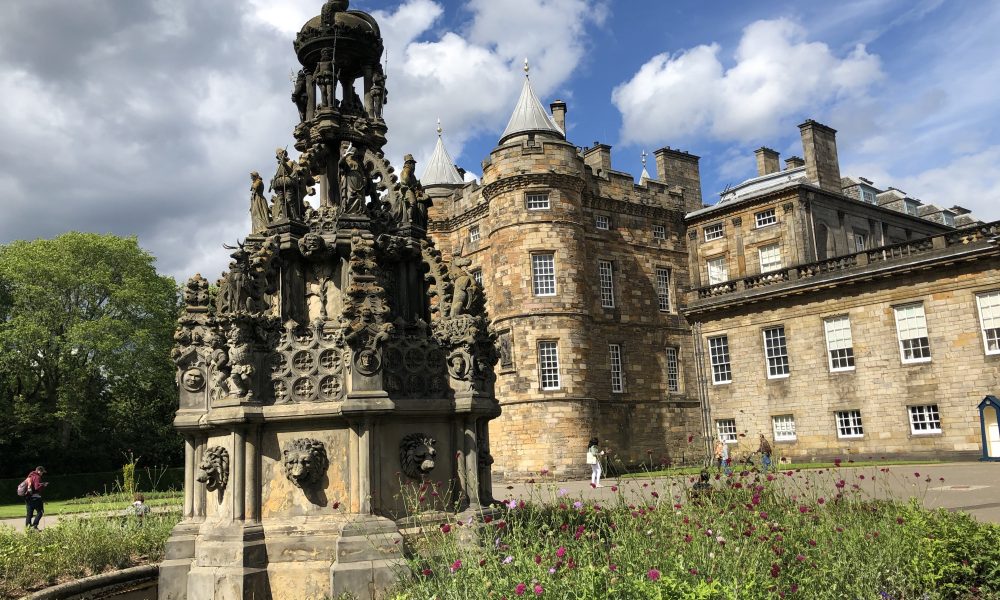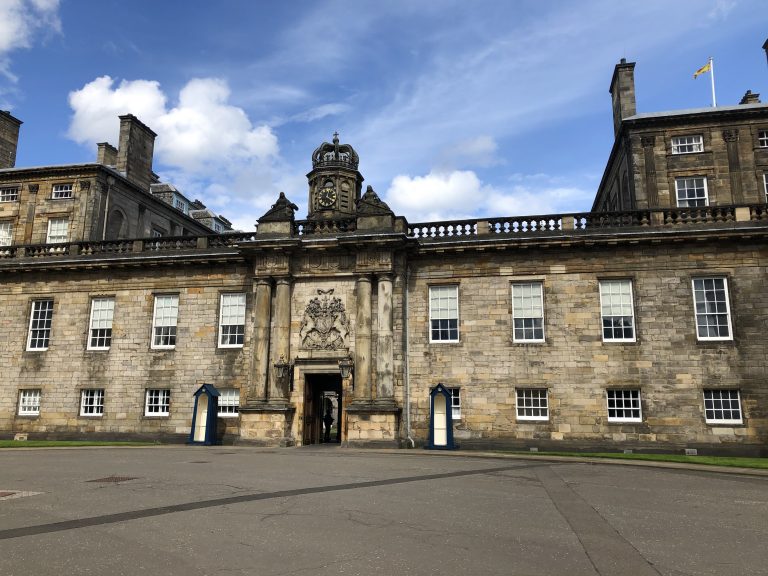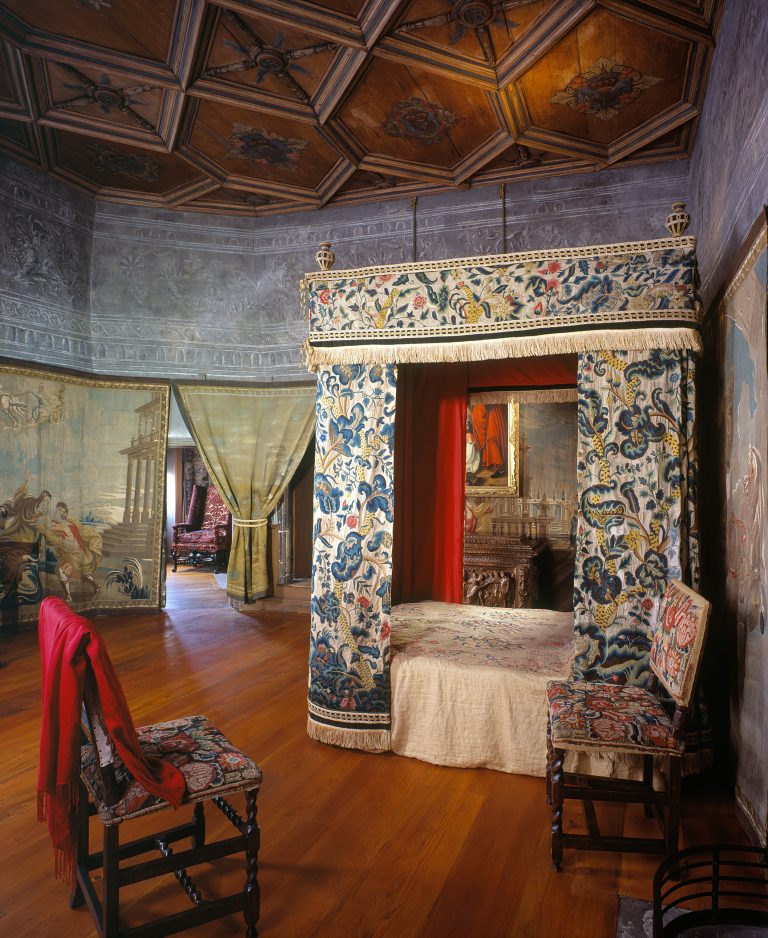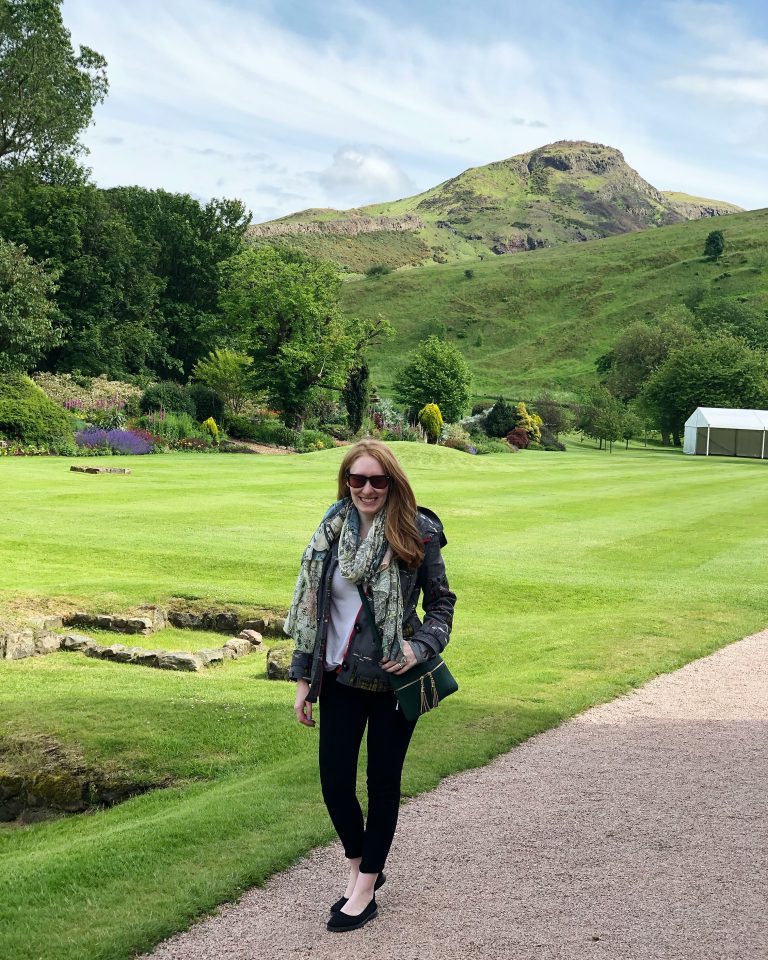
In honour of The Queen’s Holyrood Week, we’re taking a look at royal history in and around Edinburgh. Our senior reporter Kristin Contino headed to Scotland to find out more about some favourite royal spots.
The first thing that strikes you about the Palace of Holyroodhouse is how peaceful it is compared to Buckingham Palace. If you’ve ever been to London, you know how busy and public the area around the palace is, but with Holyroodhouse, it’s quite different. Although the palace is based at the end of Edinburgh’s Royal Mile – the main tourist drag that stretches from Edinburgh Castle to the Palace of Holyroodhouse – you cannot see the palace itself from the road.
Surrounded by green parkland and the towering Arthur’s Seat behind it, you feel like you’re in the secluded Scottish countryside instead of in the middle of a major city. No wonder The Queen enjoys visiting the palace for a week every year, as it is her official residence in Scotland.

History of the palace
Quick history lesson: Holy Rood means ‘Holy Cross.’ The palace itself was first built by James IV in 1503 at the time of his marriage to Margaret Tudor, sister of Henry VIII of England, although almost nothing from these original buildings exists today. The oldest part of the palace you can see now, which includes the Mary Queen of Scots’ Chambers, was built in 1528, but the palace was badly damaged during a 1650 fire and most of it was abandoned, except an area used as a barracks.
After Charles II was restored to the throne Holyroodhouse was renovated, rebuilt, and restored to a royal residence, and most of the current palace as we know it was finished in 1679.

Touring the palace
Once you purchase your ticket and step inside you’re transported into the world of the royal family. The first thing you see in the forecourt is the imposing fountain, but it was actually installed much later than the rest of the building.
When Queen Victoria and Prince Albert visited the palace, some renovations and improvements were carried out. If you know anything about Prince Albert, you won’t be surprised to know he took a huge part in the work since he was keenly interested in design and landscaping. The fountain that sits in the forecourt today was modelled after the one at Linlithgow Palace, the birthplace of Mary Queen of Scots, which will be covered in a future article.

A free audio guide tour is included in your admission, and they’ve got a special version for kids if you’ve got little ones along like I did. The headset gave my son something to do during what would probably have been a boring day out for a young child; I definitely recommend using it. A family room also is available, filled with fancy dress costumes and colouring activities.
When you enter the palace, you’ll see the buildings are laid out in a quadrangle with a grassy courtyard in the centre. This is the last place where you’re permitted to take photos since the building is still in use as an official royal residence.
My personal favourite part of the palace tour was seeing Mary Queen of Scots’ bedchamber. If you’re a royal history buff (or if you saw the recent film, Mary Queen of Scots) you surely know the story of her private secretary David Rizzio’s murder.

During the tour of the palace, you walk up the narrow, windy stairs between Lord Darnley’s rooms and Mary’s, following the path that was taken the night of Rizzio’s murder. Rumour is there’s still a bloodstain on the floor, although somehow I missed that corner of the room.
Other highlights of the palace include the royal dining room and The Great Gallery, lined with stunning portraits of royals through the years.

Now through 6 October, a special exhibition is on at the palace featuring the wedding outfits worn by the Duke and Duchess of Sussex (read our coverage of the exhibit here).
After you finish the royal wedding exhibit, you can step outside into the ruins of Holyrood Abbey, built in 1128 by David I. The abbey next to the palace inspired some of Queen Victoria’s and Prince Albert’s artwork, and they would have enjoyed views of it from their rooms there.

From there, visitors are welcome to stroll through the palace gardens. With the lush, green landscape and beautiful views of Arthur’s Seat, it’s an ideal place to snap a few photos.
They were setting up for The Queen’s garden party whilst I was there, so that was interesting to witness. Do note that the palace is closed until 5th July 2019 due to Her Majesty’s visit, so plan your trip accordingly.

Overall the palace is an excellent day out and well worth a visit even if you don’t know much about royal history. From an architectural and landscaping perspective I found it to be much more beautiful than Buckingham Palace, and I imagine the royal family might agree.
I likely won’t be back in Edinburgh any time soon, but if you think you will, get your ticket stamped and you can use it to visit again within one year.
Visit the Royal Collection Trust’s website to learn more about the palace or to purchase tickets.

